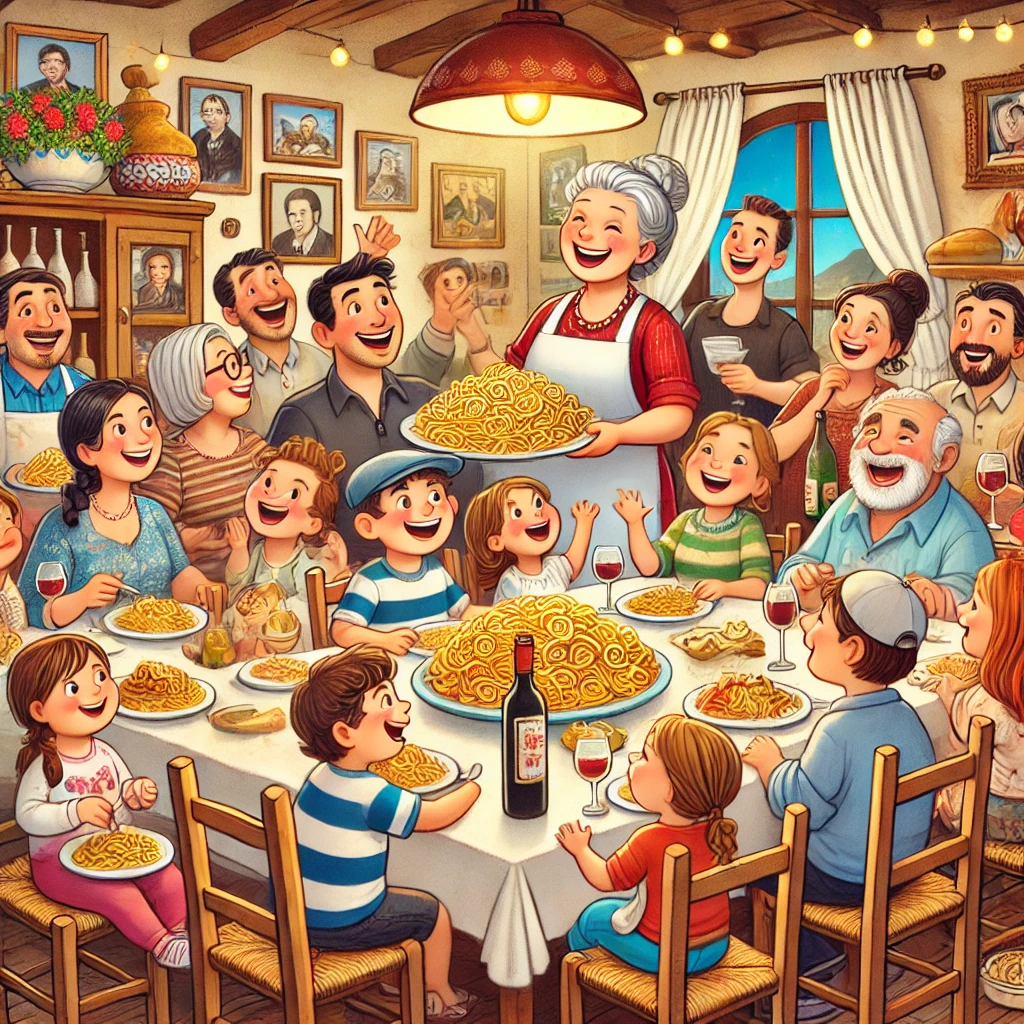
Talking About Family – Meet the Nonna, Zio, and Everyone In Between! 👨👩👧👦🇮🇹 #
Welcome to the wonderful (and sometimes chaotic) world of Italian families! In Italy, family isn’t just important—it’s everything. Whether you’re introducing your nonna (grandma), talking about your fratello (brother), or figuring out how many cousins (cugini) you actually have, this lesson will have you speaking like you’re part of the famiglia.
What You’ll Learn #
In this lesson, you’ll discover:
- The names of all your family members (even the ones you didn’t know you had).
- How to describe family relationships—“Questo è mio zio, non mio cane!”
- Essential phrases for surviving family gatherings, like “No, non voglio un altro piatto di pasta!”
Why It’s Important #
Imagine this:
- Geoff: Questa è la mia cugina. (This is my cousin.)
- Viktor: Ma Geoff, “cugina” è femminile. Tuo cugino è maschio! (But Geoff, “cugina” is feminine. Your cousin is male!)
- Geoff: Ah… quindi lui è la mia “cugino”… o no?
- Viktor: No, no… lascia perdere, parliamo del tempo! (No, no… forget it, let’s talk about the weather!)
Learning how to talk about family in Italian will help you navigate social situations without accidentally promoting your dog to nonno (grandpa).
Viktor’s Family Tip #
Viktor says:
“In Italia, se sbagli a chiamare qualcuno ‘zio’ invece di ‘cugino’, probabilmente ti offriranno comunque un piatto di pasta. Ma meglio farlo bene!”
(In Italy, if you accidentally call someone ‘uncle’ instead of ‘cousin,’ they’ll probably still offer you a plate of pasta. But it’s better to get it right!)
What’s Next? #
Ready to meet the famiglia? Dive into these lessons and start introducing your parenti (relatives) like a pro:
✨ Let’s bring the whole famiglia together—Buona fortuna! 🎉